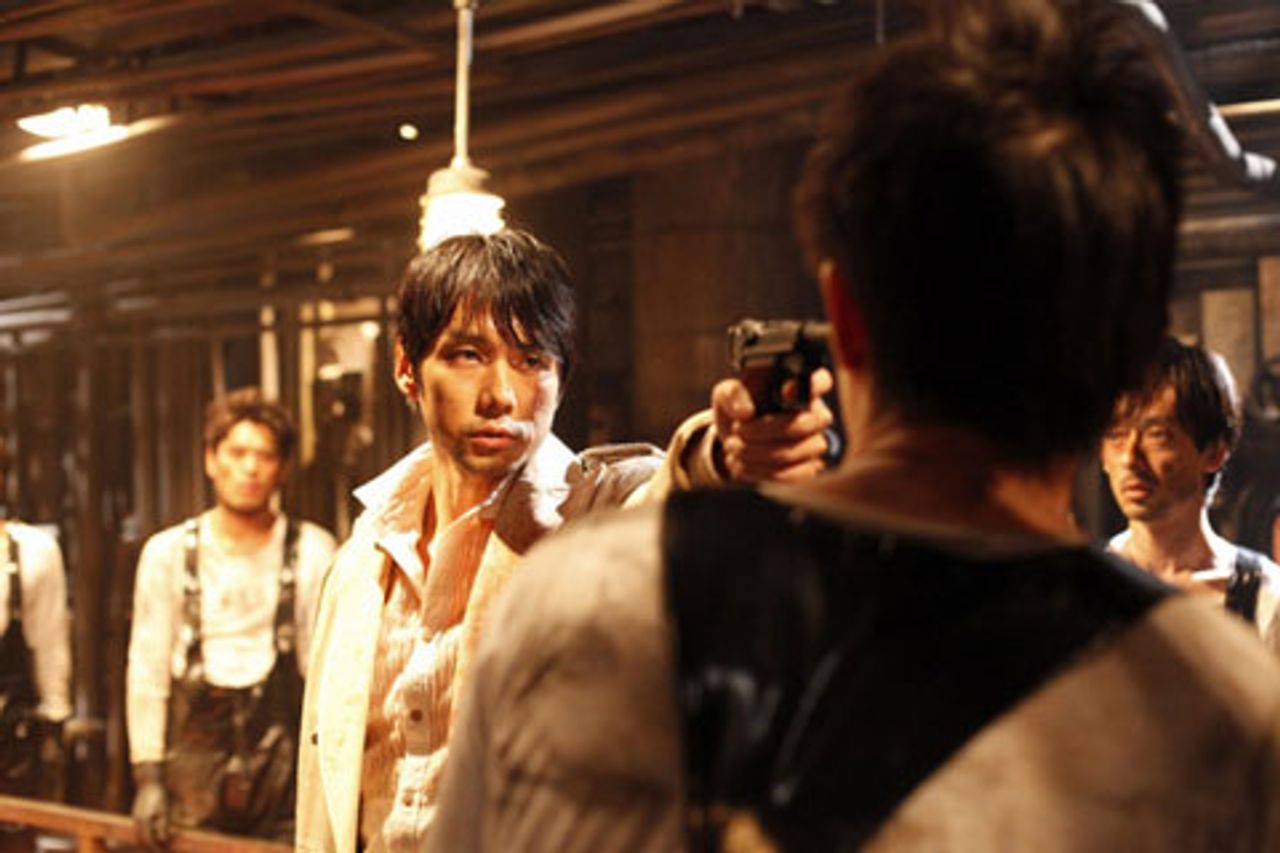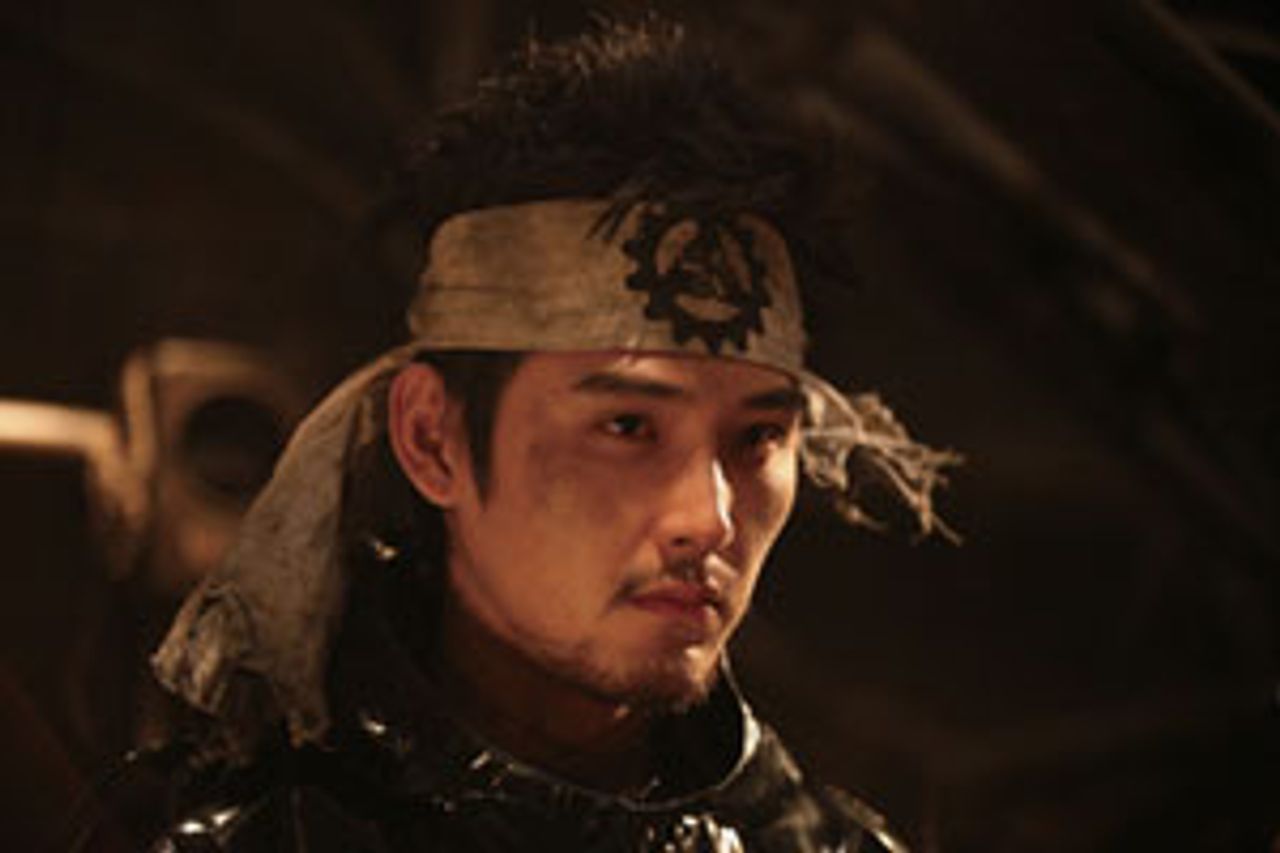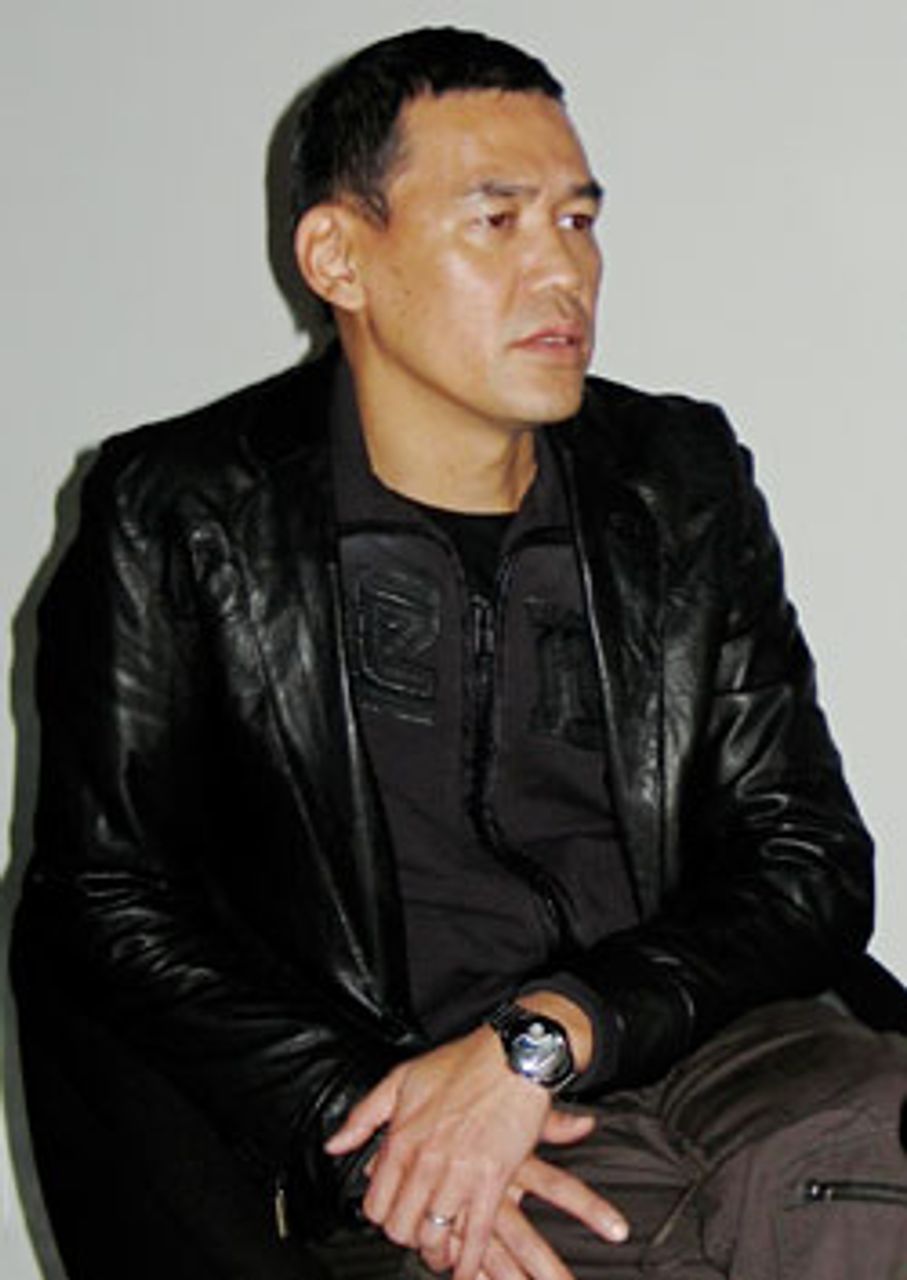This is the third in a series of articles on the recent Berlin International Film Festival, February 11-21. Part one was posted on February 24, and part two appeared February 26.
One film that stood out at the film festival was the recent adaptation of the novel Kanikosen (The Crab Factory Ship) by the Japanese director Sabu (born Hiroyuki Tanaka in 1964).
 Kanikosen
Kanikosen The novel was published in 1929 and relates the story of a group of men on a crab fishing and canning ship who are brutally exploited by the company foreman who exhorts them to work harder in the interests of the nation. When the factory ship’s radio receives a S.O.S. from another vessel, the foreman refuses to suspend production for a rescue operation.
The turning point in the story comes when some crew members are lost at sea and rescued by a Soviet vessel. On board they meet a Chinese communist who teaches them to stand up for their fellow workers. Initially suspicious of “communism,” the workers return to their ship, form a union and revolt against their bosses.
The novel highlighted the class tensions in Imperial Japan, when the militarist regime stamped out any industrial action or protests. In the story, the strike on board the ship is brutally repressed. The novel quickly won an audience following its publication and was adapted for theatre in the same year. Its author, Takiji Kobayashi, joined the Japanese Communist Party in 1931, and was arrested and tortured to death by Japanese police two years later at the age of just 29. The novel Kanikosen was banned in Japan in the 1930s and 1940s as part of the regime’s ruthless suppression of the socialist movement.
A film by director So Yamamura based on the novel appeared in 1953, but in postwar Japan annual sales of the book never exceeded 5,000.
More recently, however, the situation has changed: in 2008 more than half a million copies of the book were sold. In addition, no fewer than four different manga comic versions have been produced. The book has found an explosive resonance, particularly among young people in Japan, who, in the first decade of the twenty-first century, are able to identify with the oppressive social conditions that prevailed in Imperial Japan 80 years earlier.

In his remake of Kanikosen, director Sabu has made significant changes. He injects surreal and absurdist elements not to be found in the realist approach adopted by the original novel and the 1953 film version. At the start of Sabu’s film, we witness the workers employed in the dark, wet depths of the ship manipulating the levers of the oversized cogs and wheels of the crab-canning machinery. Recalling Chaplin’s Modern Times, the workers are literally one small cog in the entire production process.
A subsequent scene depicts the workers seeking to end their miserable existence by (unsuccessfully) attempting mass suicide. The black humour on display is obviously drawn from Sabu’s past experience as a director of anarchic-type comedies.
Another change from the original novel and the 1953 film is Sabu’s decision to give his characters names and develop the personalities of some of the leading ones—exemplified in an early scene, for example, where a number of the workers reminisce about their past.
I was able to take up a few of these issues in an interview with the director. As Sabu makes clear, he made a number of changes to his film in order to attract a larger audience. His background as a director of comedies with mass appeal to young people was evidently a factor in his choice to make Kanikosen.
The changes introduced by Sabu to win a new audience for the filmed version of the novel are warranted, in my opinion, and appropriate to the novel’s principal motives. What stands out in the interview with Sabu, however, is the extent to which he seeks to play down the political issues involved and distance himself from the objective social content of his film. This speaks to various ideological and historical problems.
The director stresses that his attempt to inject the main characters with more personality was aimed exclusively at encouraging individualism in Japan’s conformist society. There might be some legitimacy to this, but, as has been noted more than once, there are different kinds of individualism. What does the filmmaker have in mind? This was our conversation.…
Interview with director Sabu
WSWS: What is the relevance of your film for young people today?
 Director Sabu
Director SabuSabu: I think in any period young people can lose their way, they do not know what to do, they have to decide what they want to do in life. Sure, in Japan the economic situation is difficult and young people have difficulties to find a job, but it doesn’t really matter if it is Japan or Berlin or anywhere else in the world. These are things that people have to deal with, especially in Japan, because Japan is not a country where you are encouraged to stress your individuality. I wanted to pass the message that you have to take your life in your own hands and you have to think for yourself—decide what you want and what you want to become—decide and take action.
WSWS: Could you say a bit more on the situation of the young people in Japan, which has led to such a response to the film?
Sabu: I think that people have to fight to find work—that is a fact. But I also know young people who would rather just play music and do jobs here and there, and become temporary workers. Of course, when they don’t have a stable job, their situation is not so good. This is partly due to their own choice—on the other hand, there are so many young people going to university who are focused on what they want to become and are seeking a job in a good company, but fail because of the economic situation.
So I have pity for young people. I hear from the news and mass media today that young people are in a difficult situation and have difficulties finding a job. But what I actually see in my daily life is that young people seem to be quite OK, they have mobile phones, they play games on TV, they go to soccer games. So there is a gap between what I see and what I get from the mass media, which I don’t really understand.
WSWS: There was a previous film treatment of the novel in 1953, and I have read that this version differs from your own version in quite a few ways, particularly in the way the story is told. You rely less on a realist approach and introduce surreal and absurdist elements. Why did you decide to make these changes?
Sabu: The first film from the 1950s is a very political film and very close to the original novel, whereas I wanted to make a film closer to daily life. I also wanted to make a film that would attract many people to come to the cinema, so it had to be a bit more entertaining. I wanted to reach out to people and in that sense make it more ordinary and less political.
WSWS: One of the differences between your film and the 1953 version is that the workers in the latter have no proper names and there are no prominent figures. The ’53 film (and the novel) emphasises the collective while your film highlights personalities—there is one worker who emerges as a leader, who then is killed but inspires the others. Why did you decide to make this change?
Sabu: In the first place, I wrote a script featuring characters without names and I gave them numbers, but then it became really confusing. I decided it did not make sense, I needed to have names to make them come alive as characters. In the original novel, there is a character who goes to Russia, learns, and comes back to start the revolution. This figure does not feature in the book as the main character, although that is how I see it. So I added a few things to that character who has always been the main figure from my point of view.
WSWS: There seems to me to be an extra element. The book and the movie of the 1950s emphasise the collective and argue that the masses alone can solve the problems they face. You have introduced the issue of leadership, a leading figure, somebody who can inspire others. Was it a conscious idea to stress the significance of the leading figure?
Sabu: I think this leading character just gives an initial impetus. Until he is killed, everybody just accepted their situation and only became serious about things after he died. Then they actually took over responsibility for themselves, each of them. In Japan, people tend to just follow other people and do not really follow their own individual intentions. I think if every individual becomes serious, takes action and moves in the same direction, then this becomes in the end a collective movement. But again, I didn’t want to stress the collectiveness too much because it often tends to become violent and I don’t think that’s good. So I think it’s about each person thinking by himself/herself, and only if one really takes a serious attitude and everybody moves can there be any real change.
WSWS: Has there been criticism on the film of some right-wing forces in Japan?
Sabu: No, there was no such reaction at all. For me, left or right is really not important and I really took out all the politically obvious implications from both sides. So for me, it is really about the individual who becomes responsible for him/herself.
WSWS: One of the characters says towards the end of the film is what is important is to do something and that we act in the here and now. At the same time, the inspiration for the film is a historical novel. What is the significance of the fact that you draw from history for your film in order to be able to understand and to act now?
Sabu: I think it depends on every individual. But what I also say in my other films is that it is very important to address the present. If you do so, then the future will change. So this has nothing to do with the original novel, this is something that I created.
WSWS: Your film is basically a plea for revolution. In the 1920s, when the book was written, it was a plea for replacing capitalism by socialism. Do you believe in that? Do you think it is necessary today in Japan and in other countries to replace capitalism?
Sabu: No, that is not at all my implication. I think that the people should try hard and that workers should receive their just rewards.
To be continued
